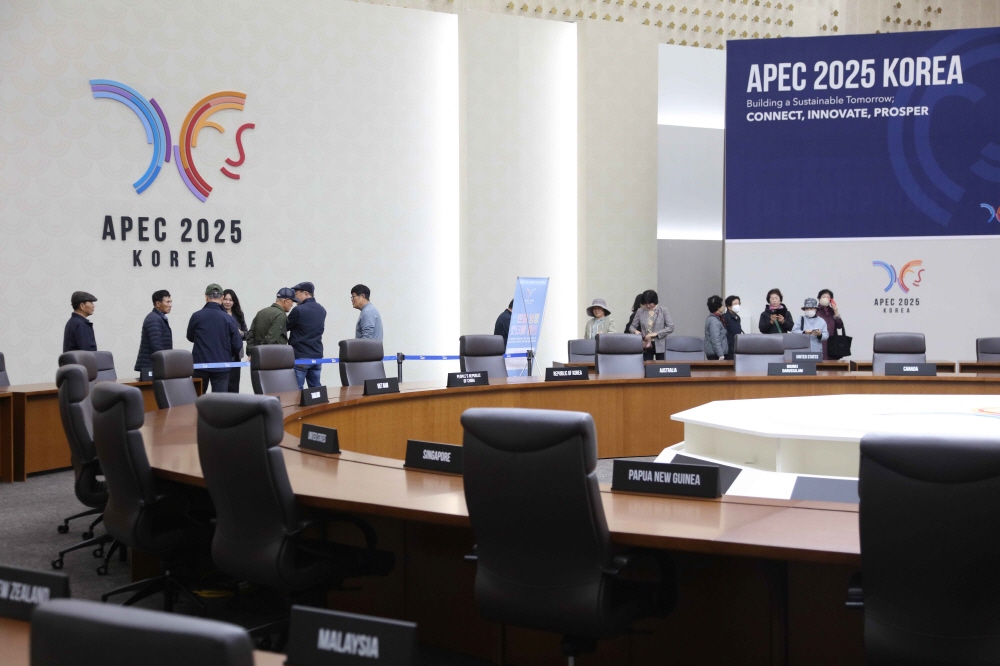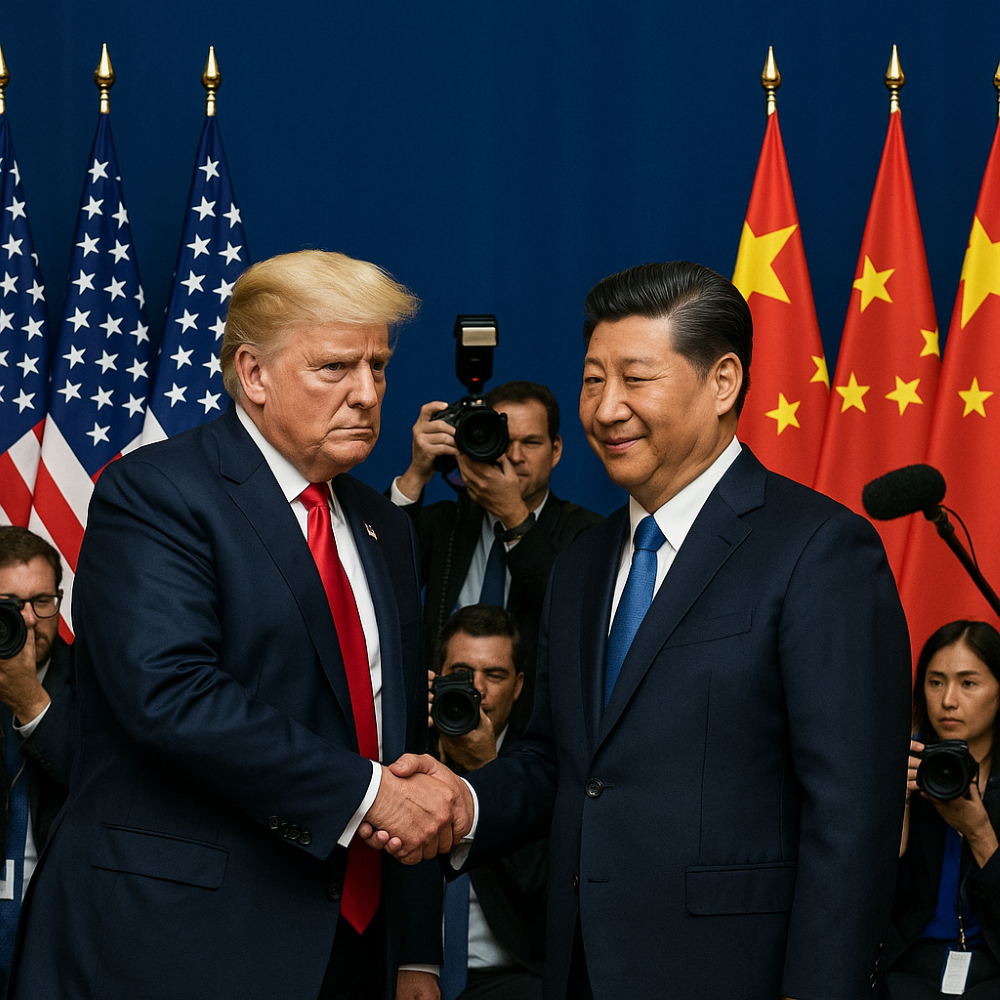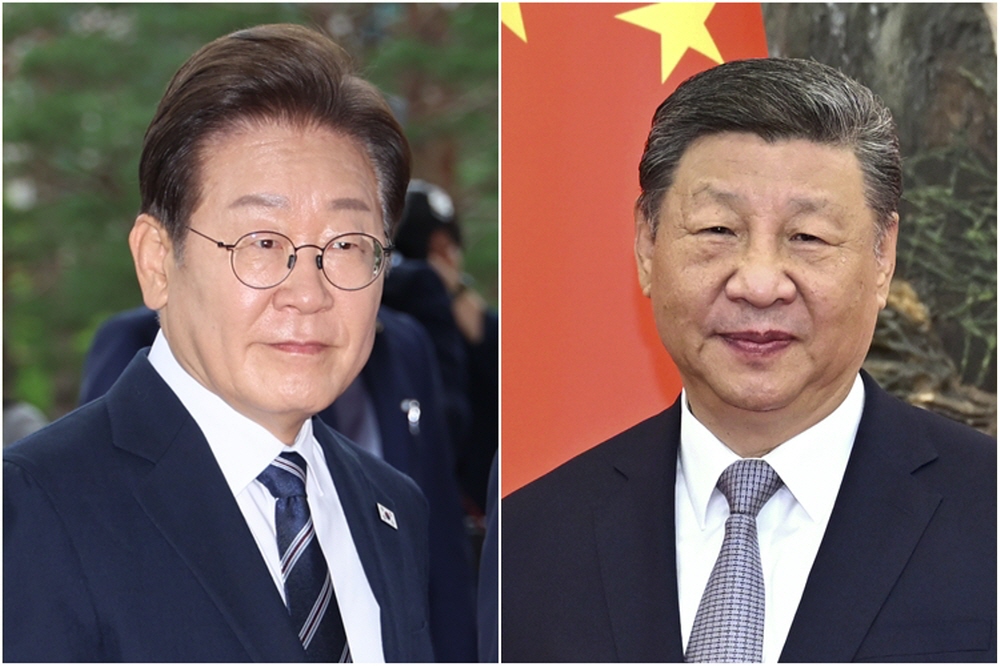

Key Takeaways:
- APEC 2025: Amidst global tensions, the Gyeongju summit successfully reaffirmed multilateral cooperation, focusing on economic integration, AI transformation, and supply chain resilience.
-The ROK-US Trade-off: A bilateral summit resulted in a controversial deal where South Korea pledged a massive $350 billion investment in the US in return for reduced tariffs, raising domestic concerns over the cost.
- The Submarine Deal: The US agreed in principle to supply nuclear fuel for ROK submarines, signaling a deeper alliance, but the deal remains uncertain, facing significant legal, diplomatic, and logistical hurdles (like where they will be built).
2025 APEC: Building a Sustainable Tomorrow
The 2025 Asia-Pacific Economic Cooperation (APEC) meeting, hosted by the Republic of Korea, concluded successfully in the historic city of Gyeongju. Held from October 31 to November 1, the summit carried the overarching theme, “Building a Sustainable Tomorrow,” and centered on three priorities: Connect, Innovate, and Prosper.
Under the ‘Connect’ agenda, leaders sought to strengthen regional economic integration and develop the world’s most dynamic and interconnected regional economy. The ‘Innovate’ priority focused on preparing the region for the accelerating digital and artificial intelligence (AI) transformation. Meanwhile, ‘Prosper’ emphasized shared growth, inclusiveness, and the collective response to global challenges.
At the conclusion of the Economic Leaders’ Meeting, the leaders of the 21 APEC member economies adopted the ‘Gyeongju Declaration’, reaffirming their commitment to economic cooperation and sustainability. The declaration underscored several key initiatives: enhancing supply chain resilience, promoting AI-driven economic growth, supporting startups and women’s participation, addressing demographic change through collaborative frameworks, and reinforcing regional resilience by diversifying energy sources and improving food and ocean sustainability.
This year’s APEC meeting took place amid complex global challenges — the ongoing Russia–Ukraine war, rising tensions in the Middle East, and intensifying competition between the United States and China in the Indo-Pacific region. Against this backdrop, the Gyeongju Declaration emphasized inclusiveness, integration, and resilience as guiding principles for navigating geopolitical uncertainty. The trade policies of the Trump 2.0 administration and China’s firm retaliatory stance have further complicated the regional economic landscape.
Despite this difficult environment, the 2025 APEC summit played a constructive role in easing regional tensions and reaffirming multilateral cooperation. Ultimately, the true test of APEC’s success will depend on how member economies implement their commitments and translate the discussions in Gyeongju into concrete economic and investment outcomes.
Key Takeaways from the ROK–U.S. Summit
On the sidelines of APEC, President Lee Jae-myung and President Donald Trump held a bilateral summit — their second meeting following talks in Washington, D.C., on August 25. The two leaders discussed a broad range of issues, from trade and investment to defense and technology cooperation. The most contentious agenda item, however, was the negotiation of a new trade framework.
On the economic front, President Lee pledged USD 350 billion in investment into the United States, while President Trump agreed to reduce tariffs, including cutting tariffs on South Korean automobiles from 25 percent to 15 percent.[1] Of the pledged amount, USD 200 billion will be paid in cash installments of USD 20 billion per year, and the remaining USD 150 billion will go toward joint shipbuilding and industrial cooperation projects.[2]
This announcement sparked heated debate within South Korea. With the nation’s foreign exchange reserves standing at approximately USD 428.7 billion, committing USD 350 billion—about 82 percent of total reserves—raised concerns about the potential strain on the domestic economy.
In the realm of security, President Trump approved President Lee’s request for nuclear fuel for South Korean submarines designed to track naval activities in the surrounding seas. The agreement signaled a deepening of the ROK–U.S. alliance, particularly in the fields of defense technology and industrial cooperation.
President Lee explained that diesel-powered submarines have limited submerged endurance, making it difficult to track submarines originating from North Korea or China.[3] His statement, however, triggered diplomatic sensitivity. The mention of “tracking Chinese naval activity” prompted concern in Seoul that it could provoke Beijing, which was next in line for a bilateral summit. The Presidential Office later clarified that the phrase referred broadly to submarines operating near Korean waters, easing the potential fallout.[4]
Several legal and technical challenges remain before South Korea can proceed with a nuclear-powered submarine program. The ROK-U.S. 123 Agreement, which governs nuclear cooperation between the two nations, restricts the use of U.S.-origin nuclear materials for military propulsion. It also limits access to reprocessing technology necessary for such submarines. Without an amendment or supplementary agreement, South Korea would face procedural hurdles in moving the project forward.
Adding to the uncertainty, President Trump later posted on X, “South Korea will be building its Nuclear Powered Submarine in the Philadelphia Shipyards, right here in the good ol’ U.S.A.” [5] While this was widely interpreted as Trump’s characteristic negotiation style aimed at a domestic audience, it underscored the need for close working-level coordination between the two allies to prevent misunderstandings.
The Road Ahead
Although tariff reductions appeared straightforward, the broader trade agreement remains vague and will require further refinement. Many observers in South Korea believe the current framework favors the United States more than South Korea, at least in the short term. Nevertheless, the summit marked a step toward expanding the alliance beyond defense into high-technology cooperation.
The absence of a Joint Factsheet following the summit suggests that details—particularly regarding the nuclear submarine agreement—are still under negotiation. For implementation, both governments must address several outstanding issues. First, a legal review is required in Washington, as nuclear propulsion and fuel enrichment are governed by strict non-proliferation and export control regimes.
Second, both sides must decide whether to amend or supplement the 123 Agreement to allow for enriched uranium use in military propulsion. Third, timing and coordination will be crucial. ROK Defense Minister Ahn Gyu-back noted that coordination among U.S. departments could take considerable time, especially given recent government shutdown disruptions.
Fourth, the construction site for the submarines remains a point of contention. South Korea insists on domestic construction, while Trump’s social media post suggested an American shipyard. Minister Ahn later commented, “Philly Shipyard lacks the necessary facilities for submarine construction; domestic construction is the most rational approach.” [6] Finally, the ROK government must engage in proactive diplomacy with neighboring countries—particularly China, Japan, and Russia—to avoid unnecessary regional friction over its submarine ambitions.
The ROK–U.S. summit at the 2025 APEC meeting marked a turning point in the alliance modernization. Beyond reaffirming traditional defense cooperation, the discussions opened a pathway toward deeper technological and industrial collaboration. As the two nations navigate legal, political, and diplomatic challenges, the outcomes of these negotiations will shape not only the future of the ROK–U.S. alliance but also the strategic balance in the Indo-Pacific region.
[1]
Ari Hawkins. “Trump touts progress in US-South Korean trade talks,” Politico,
October 29, 2025.
[2]
Reuters and Associated Press. “South Korea awards Trump gold crown amid deal to
unlock $350bn trade talks,” The Guardian, October 29, 2025.
[3]
Yoo Jee-hye and Sarah Kim. “President Lee's foreign policy outline emerges
after Trump, Xi summits at APEC,” Korea JoongAng Daily, November 2, 2025.
[4]
Shim Seok-yong, “Confusion arises over Lee's submarine tracking comments at
summit,” Korea JoongAng Daily, October 30, 2025.
[5]
Son Ji-hyoung, “Trump says S. Korea approved to build nuclear-powered sub in
Philadelphia,” The Korea Herald, October 30, 2025.
[6]
Kim Min-Seo, “Defense Minister Ahn: Nuclear Submarines Unnerves Kim Jong-un,”
The Chosun Daily, November 9, 2025.

Dr. Alex Soohoon LEE is an associate research fellow at Korea Institute for Defense Analyses (KIDA). Prior to his current position at KIDA, Dr. Lee was a Global Korean Studies (GKS) research professor at the Division of International Studies, Korea University. His research interests have been focused primarily on the issues of international security, the ROK-US alliance, the US foreign and security policy, and ROK-US-Japan trilateral security cooperation. Dr. Lee recently authored and co-authored 「The Taiwan Strait and the ROK-U.S. Alliance,」 (The Korean Journal of Defense Analysis, 2023), Biden Administration’s Indo-Pacific Security and Defense Policy (KIDA Press, 2022), 「Security and Defence Policy」 in The Oxford Handbook of South Korean Politics (Oxford University Press, 2022), 「President Bush’s Foreign Policy Decision Making after the 9/11 Terrorist Attacks」 (The Korean Journal of Defense Analysis, 2021), and 「South Korea and the 2016 US Presidential Elections: A Security-Trade Nexus Redefined?」 in American Presidential Elections in a Comparative Perspective: The World is Watching (Lexington Books, 2019). Dr. Lee holds a B.A. in International Relations and Asian Studies from Lehigh University, PA, received a Global M.B.A. from Business School and a Ph.D. in International Relations from the Graduate School of International Studies (GSIS) of Korea University.




